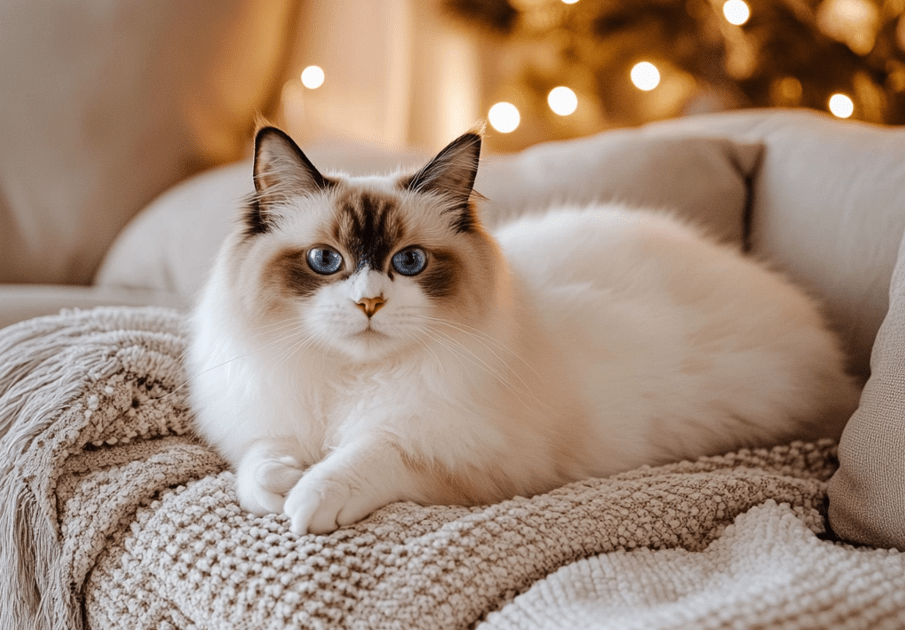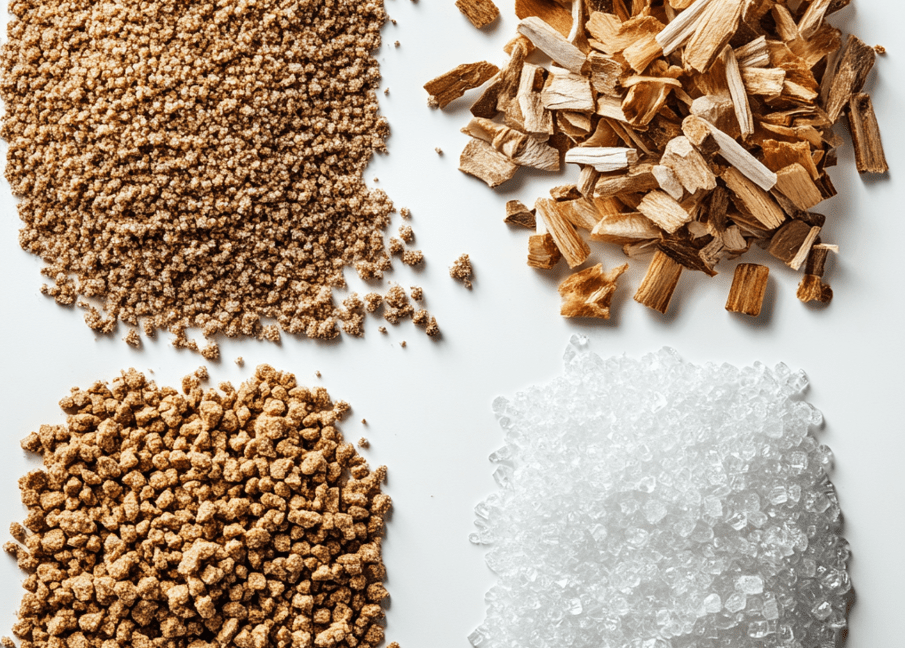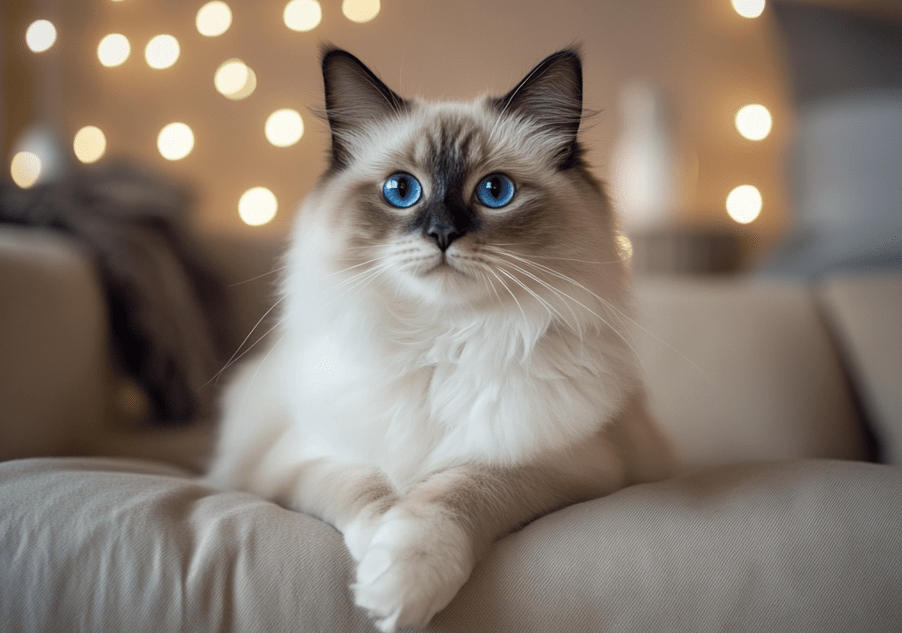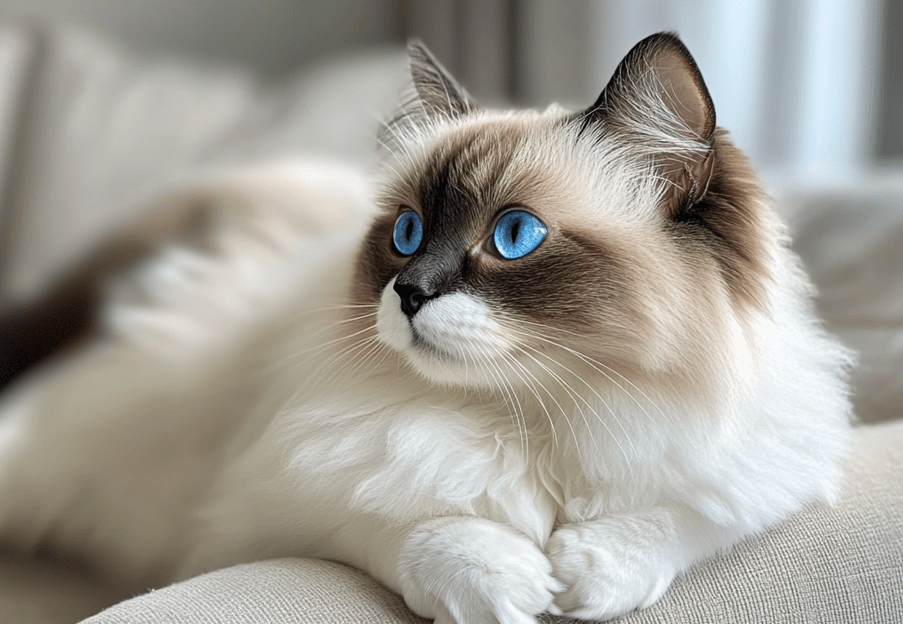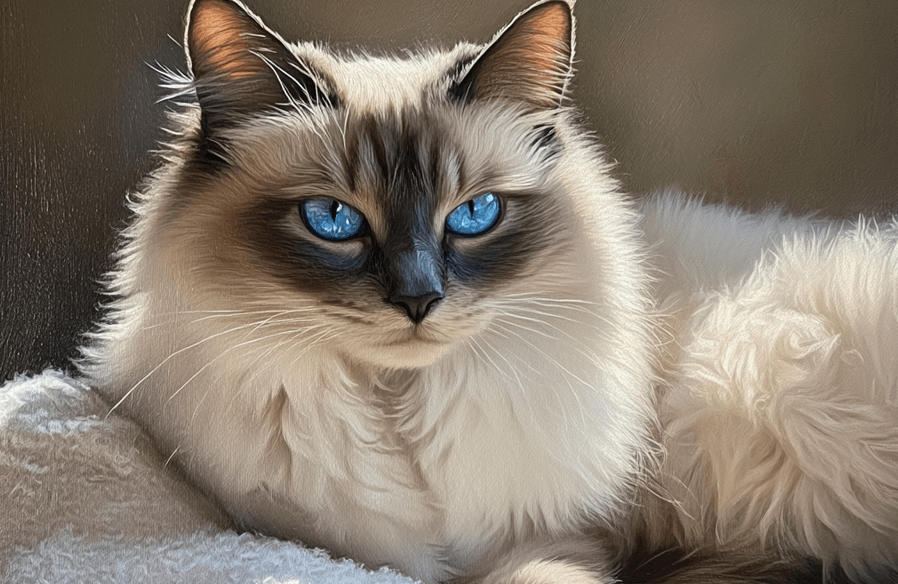
The Ragdoll cat temperament is widely admired for its gentle, affectionate nature, making this breed an ideal companion for families and pet lovers alike. If you have heard of the Ragdoll cat you will know that they are known for their playfulness, gentleness and stunning blue eyes. For those considering adopting a ragdoll kitten, understanding the temperament of this gentle and affectionate breed is essential for a smooth transition into your home. The Ragdoll breed is perfect for those looking for a loving, adaptable feline who would fit well in a busy household. Ragdoll cat facts reveal that this breed is known for its gentle and affectionate nature, making it an ideal choice for both individuals and families.
Unique Characteristics of Ragdoll Cats
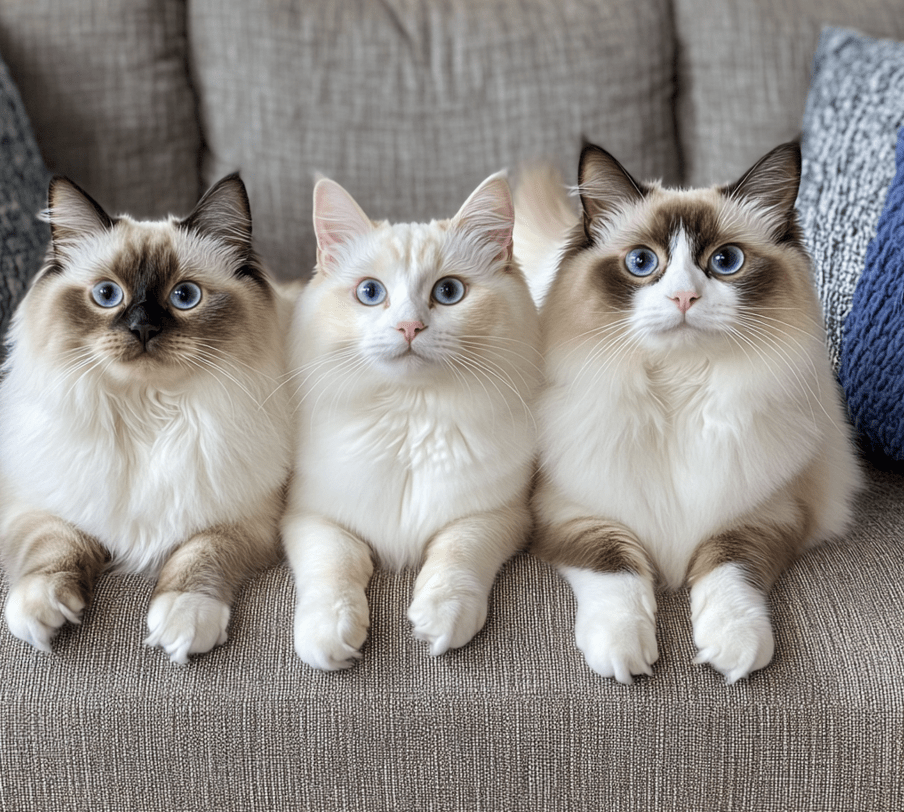
Ragdoll cats have not only their signature blue eyes, but also large paws, big fluffy tails, and semi-long, silky coats. For those interested in learning more, ragdoll cat facts show that these cats have a unique appearance with large, expressive eyes and distinct coat patterns. Their fur is typically mostly white with contrasting darker colors on the head and tail. This coloration, with pale fur and darker ears, face, tail, and/or paws, is called a point coat. Ragdoll cats come in a wide range of coat color divisions, generally divided into four distinct patterns:
Bi-color: Bi-color cats have white fur on their belly, chest, and all four paws, as well as a V-shaped marking on the face and a pink nose.
Colorpoint: This pattern has darker points at the ears, face, paws, and tail that are not covered with white fur. The paws and nose are consistent with the darker coloration.
Mitted: Mitted Ragdolls boast a white chin, belly, and paws, frequently with a white spot on the forehead and nose.
Van: This pattern has dark markings limited to the face, ears and tail, with the nose and paw pads staying pink.
All of these patterns are accepted by the Cat Fanciers’ Association for show purposes paired with six different colors:
Blue: A bluish-white colored coat that fades to white on the chest and abdomen in combination with light gray nose and paw pads.
Chocolate: Dark chocolate-colored points on an ivory body and to white on the chest and belly. The nose and the paw pads are pink.
Cream: Soft cream or pinkish-cream points on a white body, with any shading harmonizing with the points.
Lilac: A white coat with pinkish-gray points and pink or lavender-colored paw pads.
Seal: A fawn-colored body that is lightening a tinge towards the chest and stomach with dark brown points and matching nose and paw pads.
Red: A rich red body with a white face with red or reddish-orange points, and pink nose and paw pads.
Ragdoll points can also be solid, parti-colored or lynx patterns, leading to many different color combinations.
Personality Traits of Ragdoll Cats
They are cuddly, docile, and just plain gentle. They’re careful around children and tend to prefer gentle play, and will rarely use their claws. This behavior is often cited in ragdoll cat facts, where they are known to be incredibly friendly and social, making them excellent companions for children. The ragdoll cat behavior is characterized by their calm nature and ease around children and pets. This breed has a unique tendency to go limp when picked up, which inspired their name based on the likeness to a child’s ragdoll toy.
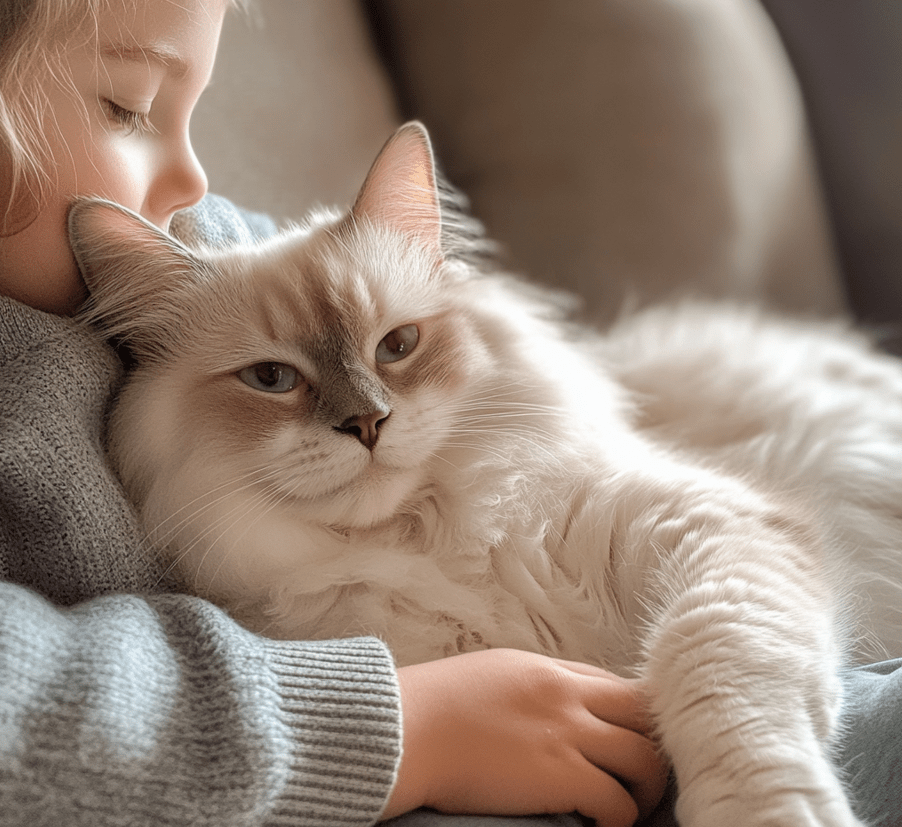
These cats are very social and like to follow their owners around the house, cuddle on the couch, and even sleep in bed with them. This is a prime example of ragdoll cats behavior, as they enjoy constant companionship and affection. When adopting a ragdoll cat, it’s important to consider how their affectionate nature makes them an ideal companion for families and individuals alike. Not particularly high-energy, Ragdolls do enjoy playtime and get along very well with kids and other pets.
The Ragdoll cat is bigger than many other kinds of cat. Males generally weigh 15 to 20 pounds, females, 10 to 15. They grow slowly, and are considered fully mature at about 4 years, and their coat color at about 2 years.
According to one Swedish study, the Ragdoll breed has a shorter lifespan than most other popular cat breeds, with just 63% living to age 10 or older. This may be due to certain ragdoll behavior problems, including urinary health issues, but it’s unclear if that risk goes beyond Sweden, Finland, and Denmark.
Proper Care for Ragdoll Cats
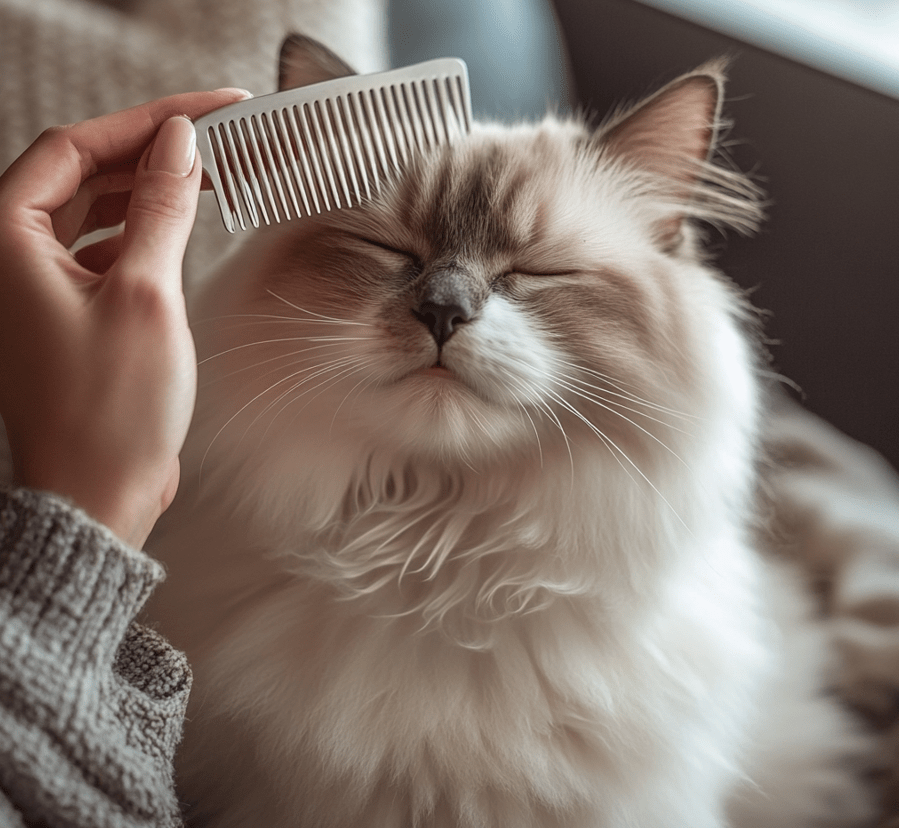
Ragdoll are long-haired but relatively low maintenance. Frequent brushing with a steel comb prevents tangles, reduces shedding and smoothens the jacket. Ragdolls do shed, however, and less so than breeds with thick woolly undercoats. They shed mostly in spring and fall, and their soft, light fur is easy to clean.
Regular nail trimming can prevent your Ragdoll from scratching up your furniture by mistake. Daily tooth brushing is also suggested to help reduce plaque formation and lower the risk of dental diseases, which are alleged to affect approximately 90 percent of cats over the age of four.
Ragdolls only need little exercise. They like to play but are happy to chill at home and be loved on. Those who are adopting a ragdoll kitten should be prepared to give them the care they need, including frequent grooming and a balanced diet to maintain their health and happiness. They can also be trained to play fetch, but are not explorers and seldom jump off the ground.
They have low levels of physical activity, which makes it crucial to keep an eye on a Ragdoll’s diet to avoid unnecessary weight gain. To look after them, like most cats, they want to graze, eating small amounts during the day. Now, free-feeding is fine in combination with some interactive play to burn off those extra calories.
Ragdolls should have a clean litter box at all times. You should scoop it out once a day and change it once or twice a week, depending on the type of litter you use.
Staying on top of vaccinations is crucial. Core vaccines include rabies and distemper, and are required for every cat, while non-core vaccines are recommended depending on a cat’s lifestyle and medical needs.
Preventing heartworm is also essential. Monthly preventative treatment and yearly testing keep Ragdolls safe from heartworm, which can cause severe respiratory issues and is untreatable in felines. Because Ragdolls were bred as affectionate lap cats with a poor sense of danger, it’s advisable to keep them indoors, and give regular flea and tick preventatives.
Health Issues in Ragdoll Cats
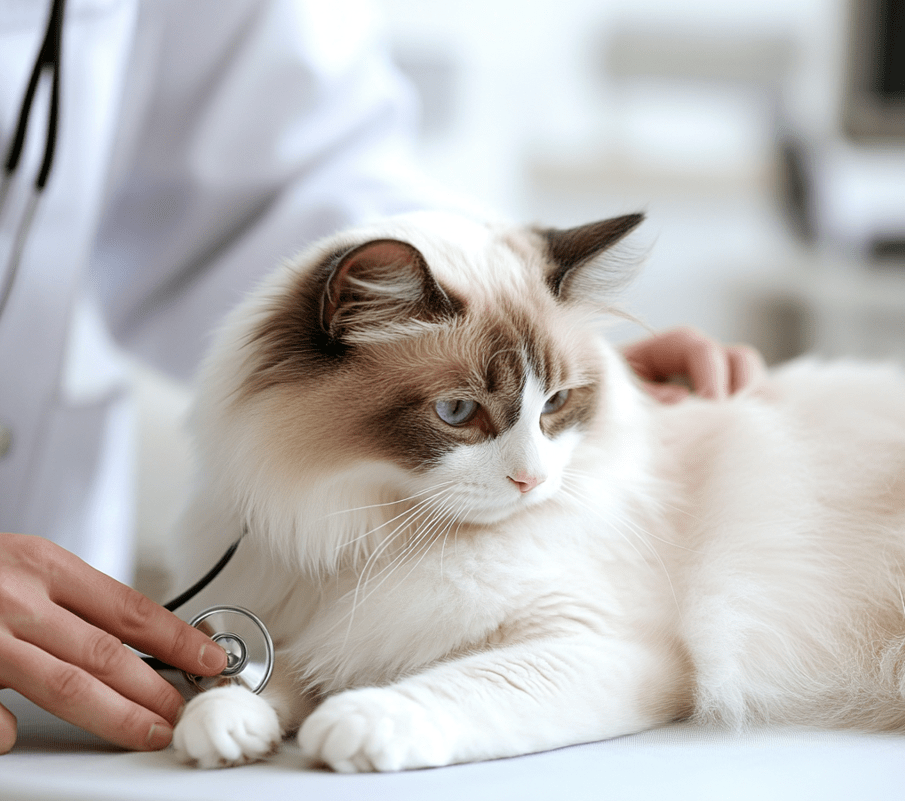
One notable health concern for Ragdolls is hypertrophic cardiomyopathy (HCM), the most common heart disease in cats. This disease leads to muscle thickening of the heart, disrupting its function. It is estimated that 30% of Ragdolls are carriers of the genetic mutation responsible for HCM. This type of condition can cause symptoms such as:
1.Weakness
2.Fatigue
3.Difficulty breathing
4.Open-mouthed breathing
5.Collapsing
Homozygous Ragdolls (inheriting the HCM gene from both parents) can develop the disease as early as six months of age, and it can become fatal by age three. Cats that get the gene from one parent (heterozygous) often have more mild signs of disease later in life.
HCM is not curable, but most cats do well with appropriate treatment and can live for years after diagnosis. HCM is a hereditary abnormality that causes thickening of the heart muscle, which can lead to heart disease, as with any hereditary condition, finding a breeder who tests for the HCM gene will help reduce the risk of this condition.
Ragdoll Cats Specific Considerations
If you have a family, it is important to choose a cat that is gentle and friendly; which are characteristics of the Ragdoll cat. Adopting a ragdoll cat can be a rewarding experience, as their sociable and loving nature makes them a wonderful addition to any household. They bond easily with other pets and love playing with children. They are so gentle and forgiving that they can be dressed up and carted around as part of a vibrant playtime. Because of their sociable nature, Ragdolls are often likened to dogs when it comes to their easygoing personalities.
If you’re looking for a feline friend that won’t fill up your home with incessant meows, these cats may be the right choice as they are not known for being the loudest. But if you’re in the market a more gregarious kitty, you might want to look at other breeds.
Regarding hypoallergenic cats, true hypoallergenic cats do not exist. Those allergic to cats are sensitive to proteins found in cat saliva, urine and dander. While certain breeds like the Sphynx might cause fewer or less severe reactions, there is no way to avoid exposure to dander altogether.
History of Ragdoll Cats
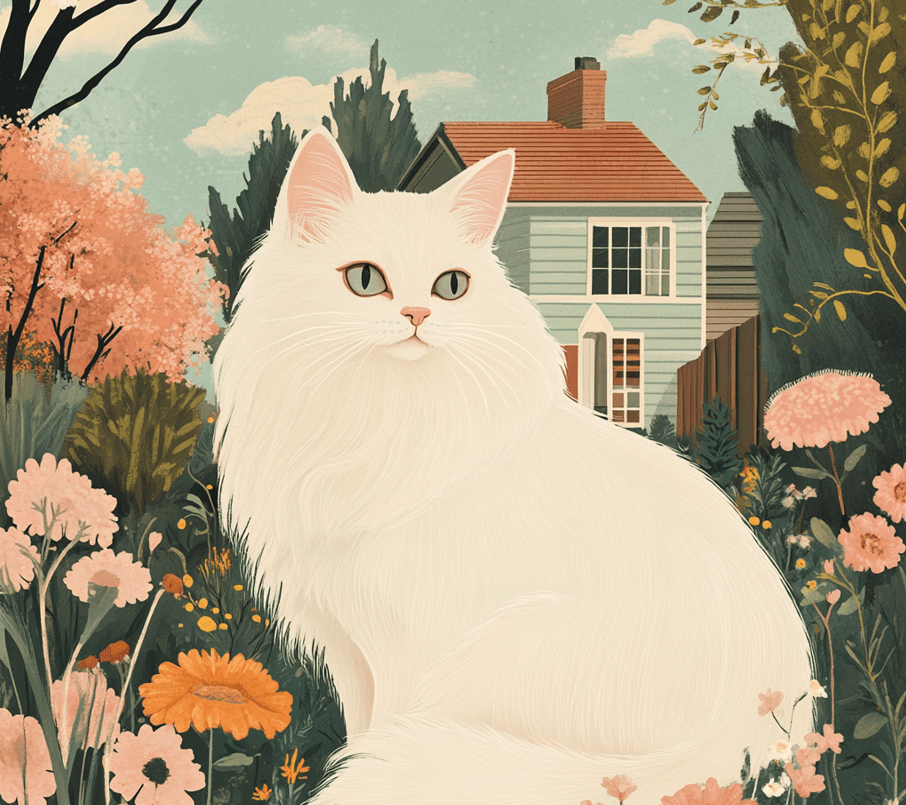
The Ragdoll cat was developed by breeder Ann Baker in the 1960s. Ann found a long-haired white domestic cat named Josephine in her Riverside, California, neighborhood and started breeding her with other cats in her care.
The Ragdoll’s unique personality may have stemmed from a very unusual experience. The Josephine that emerged after recovering from being hit by a car had a much calmer disposition. Her later litters of kittens were known to be exceptionally laid-back, going limp when picked up, a hallmark of the Ragdoll breed. Jerry’s Alternative Resource Directory.
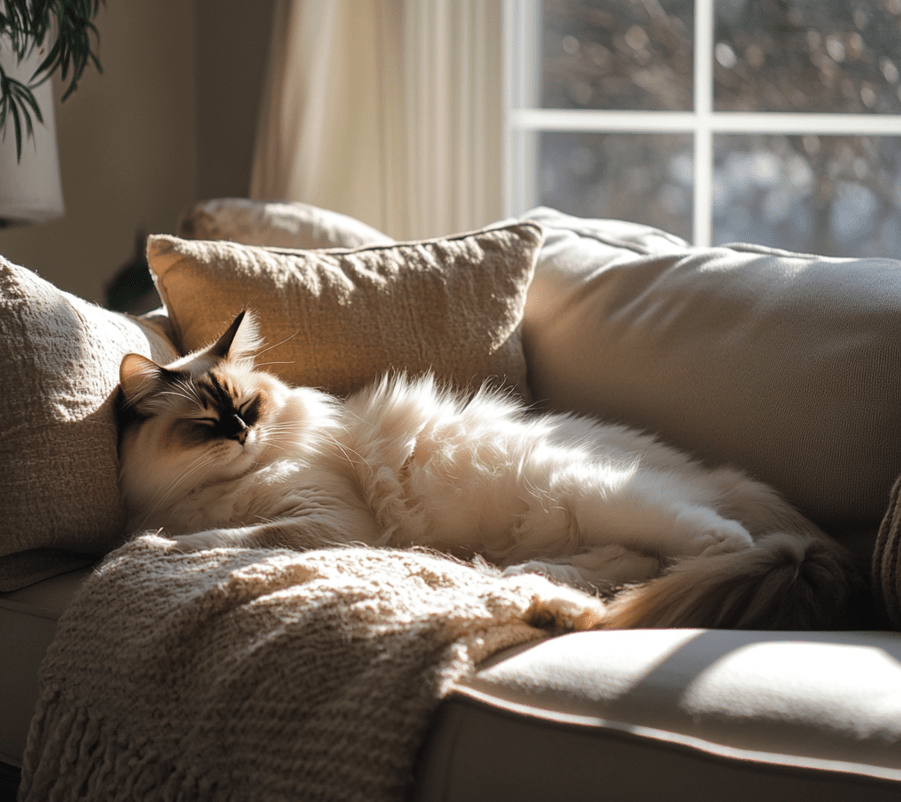
Knowing that she could perpetuate this quirky personality in offspring, Ann Baker founded the Ragdoll breed by mixing the original breed’s sweet character with its pointed color and distinctive “floppiness.” If you are thinking about adoption ragdoll cat, a Ragdoll cat’s gentle disposition and beauty make them an ideal choice for pet lovers, and adopting a ragdoll kitten offers a chance to nurture their affectionate personality from an early age. In 1975, Ann established the International Ragdoll Cat Association (IRCA) and registered the name “Ragdoll” as a trademark. After Ann passed away in 1997 and the trademark expired in 2005, a number of breeders became involved in other organizations. Today, the Ragdoll Fanciers’ Club is the breed’s largest organization.

